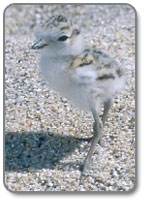|
|
|||
|
Website Updates
Western Oregon Plan Decisions Released. Oregon State Office |
About Coos Bay
The Coos Bay District of the U.S. Bureau of Land Management (BLM) manages 325,000 acres of public lands in the Coast Range of southwestern Oregon. BLM is committed to a multiple-use approach to managing your public lands. Major programs include forestry, recreation, and fish and wildlife habitat management. From the Siuslaw River to the California border, the Coos Bay District of the BLM offers a rich and diverse outdoor recreation resource for you to explore. Within the District's 300,000 acres of public land are 12 miles of coastline; 350 miles of fishable forest streams; 700 acres of coastal marshlands and estuaries; and over 1,500 miles of forest roads and trails. District ProgramsEnvironmental EducationThe Coos Bay District seeks to provide educational opportunities to citizens to help equip them with the information and the awareness needed to better participate in public processes for making important land management decisions. District Wildlife
The Snowy Plover and Oregon BeachesThe Western snowy plover was first listed on March 05, 1993. It is currently designated as Threatened in the U.S.A. (CA, OR, WA), Mexico (within 50 miles of Pacific coast). The critical habitat for this population is resticted to coastal beaches and sand dunes. Because the species is listed on the Endangered Species Act, Federal agencies, like the BLM must "consult" with the Fish and Wildlife Service to ensure that any federal action authorized, funded or carried out is not likely to jeopardize the continued existence of the species or result in the destruction or adverse modification of critical habitat. The most common actions that require consultation include authorizing off-road vehicle use, and other forms of recreation on the beach and adjoining lands. So what’s being done by BLM to help the recovery of the Snowy Plover? At both New River and on the North Spit of Coos Bay, the BLM has worked in partnership with the Oregon Parks and Recreation Department to implement seasonal closures on portions of the beach that have historically been important to plover nesting success. On the North Spit, motorized vehicles are prohibited on one section of the beach and the dry-sand portion of the same area is completely closed to all human use. |
||